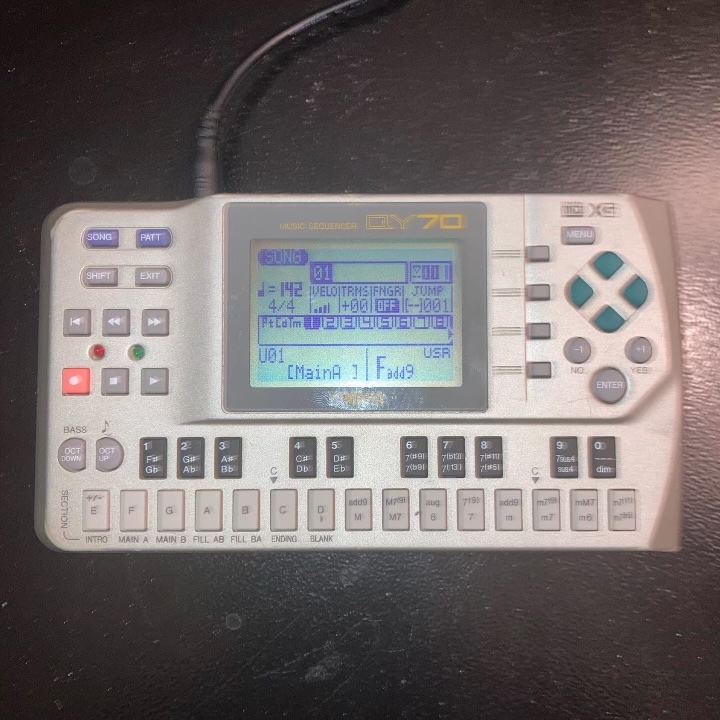Developments in music technology have created never-ending cycles of relevance and obsolescence that deem older tools less or no longer useful for modern music.
That said, a tool’s loss of perceived relevance (and value) creates a unique opportunity for producers without access to more expensive gear to exploit their strange sonic corners and design limitations.
My DivinationTech sample pack is an exercise in finding the best of these forgotten sonic spaces and giving them new life in a modern production environment. Below, I’ve outlined a few of my favorite techniques and devices I came across while creating the pack.
Access the world’s best sample library and connected creator tools.
1. Disrespect your reverb
Released in 1987, the Yamaha REV 5 belongs to a generation of bright, gritty reverb processors that I always associate with the Warp Records sound of the late ’90s. The algorithms inside this rack unit aren’t as natural sounding as modern software reverbs or as smooth as the higher-end Lexicon units of the era, but they do have an unmistakable character and unique set of parameters that can be misused to create effects never intended by the original developers.
My favorite settings on this device use the Early Reflection 2 algorithm in PAN A or PAN B Mode with the Room Size set to 20 and Liveness set to 10. This spreads the individual reflections out over a couple seconds so they’re heard as individual echoes that pan around the listener’s head depending on the reflection mode. The effect is surprisingly organic, as randomly-spaced diffuse repetitions surround the dry sound in a granular-like halo.
Take a listen to a percussion loop made with this technique here.

2. Embrace early digital
I often go to the Yamaha QY70 portable workstation when I’m looking for that ROMpler charm of the late ’90s, but don’t want to compromise desk space. On its own, the QY70 can sound somewhat lifeless in comparison to modern plugins, but running it through inexpensive effects processors such as the Zoom MS-70CDR or SP-404 can produce uniquely digital timbres that feel unachievable with modern high-resolution samples. The QY70’s tracker-like sequencer facilitates slow, intentional composition, while over 4,000 internal preset phrases provide quick inspiration and can be used to sequence external gear or plugins.
Take a listen to a drum groove that was crafted with the QY70.
Here’s my QY70—watch it in action here:

3. Explore hardware emulations
For that early digital sound, there are several fantastic free hardware emulations available today that reverse-engineer the exact software running on old digital hardware and make it available for use in modern setups. It’s important to point out that these are exact emulations and not sound-alike models, meaning you can achieve the precise sonics and workflow of the device within your DAW.
On DivinationTech, I frequently made use of Sonic Charge’s Cyclone, which is an exact software emulation of the Yamaha TX16W sampler from 1988. I would take a drum loop and sample it into the software just below the virtual preamp clipping point, lower the sample rate, and resample using the filter controls. I’d repeat this several times until the drum loop had an interesting crunchy texture that can’t quite be recreated using traditional bitcrusher effects. The sonic quirks and noise floor of the hardware can turn a clean loop into something much more compelling.
Take a listen to a loop that was made with this technique here.
Here’s what the workflow looked like in Ableton:

4. Dive into the archaic
Having an interest in forgotten and obscure software will inevitably lead you to the Internet Archive, where countless ancient software programs (and much, much more) are stored to preserve an accessible historical archive of human culture, technology, and ephemera. Among these are thousands of “shareware” programs, often developed by amateur developers and released into the public domain via huge compilations known as shareware disks. These included some of the earliest music production software and provide a unique look into the humble beginnings of the computer music revolution.
A particular gem that can be accessed with any modern browser (via the Internet Archive’s Emulation Station) is Funky Drummer by Bananasoft, released in 1985 for the Commodore 64. The straightforward sequencing of gritty 8-bit PCM samples combined with the emulator’s strange CPU timing errors is great for composing glitchy drum loops which can then be resampled into your DAW. For smoother emulation, consider using a dedicated C64 emulator such as VICE or DOSBox and downloading the program disk.
Take a listen to a drum groove that was sequenced with Funky Drummer.
Here’s Funky Drummer running in the browser via Internet Archive’s Emulation Station:

5. Craft unique textures with spectral editing
There are many powerful and unique pieces of free software made by developers interested in creating accessible tools for sound experimentation. One such tool I love in particular is Virtual ANS by Alexander Zolotov, a spectral editor which allows you to import images and ‘paint’ frequencies onto a sonogram in real time. By using different brush shapes and sizes across the frequency spectrum, you can create unique textures and percussive sounds that would be difficult or impossible to achieve using traditional synthesis methods.
Take a listen to a synth texture that was created with this technique.
Here’s what Virtual ANS’ photo-to-sound conversion feature looks like:

And there you have it! Which technique captured your interest most? What other topics would you like to see on the Splice blog next? Start a conversation with the Splice team and an ever-growing community of music creators via the Splice Discord.
Incorporate LAN Party’s unique sounds into your own productions:
May 12, 2025

.svg)
.svg)




